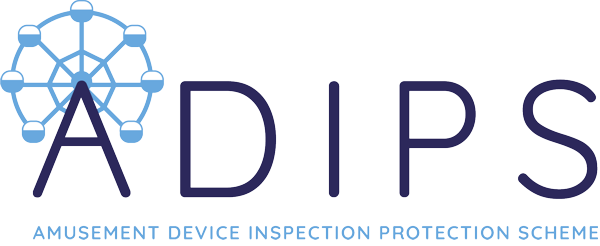
Non-destructive testing (NDT) is the process of testing for defects without affecting the condition of the component. In other words, once the test is complete the component can still be used! It is a critical part of inspection because defects may start inside components or be so small they cannot be seen without special tests. Most rides require it each year but do you know how the process should work during inspection? Here’s five things you should know if you are responsible for a ride.
1. Why does my ride need NDT?
No matter how well you know your ride there are some defects you simply cannot find without specialist equipment. Your inspection body will know the places these are likely to be found and will want to make sure they are clear of any defects before they confirm the ride is safe for use.
2. Who carries out NDT?
NDT is carried out by NDT practitioners who are qualified to perform a variety of NDT methods such as magnetic particle (MPI) or ultrasonic testing (UT). The NDT practitioner may work for your inspection body or it may be a separate NDT organisation who will supply a report for you to pass onto your inspection body before they can issue a DOC. Either way is fine, provided they are aware of their role and you supply them with the correct information they need to do the work.
3. What NDT needs to be carried out on my ride?
All rides are different and the extent and type of NDT to be performed will vary from ride to ride; some will not need any, some will need it in many areas using a number of different methods. As a ride controller you are responsible for providing the NDT practitioner and your inspection body (if different) with the information they need to carry out the work.
The work that needs to be carried out should be detailed in an NDT schedule which should be kept in the ride’s Operations Manual at all times. The NDT schedule should be with the ride when it first enters service and is normally supplied by the ride manufacturer or generated by an Inspection Body during the ADIPS pre-use inspection process.
The NDT schedule covers the parts to be tested, the frequency of the testing, the NDT methods to be used, and whether all items or a sample of them need to be tested.
Your NDT schedule may change over time as a result of information supplied by the manufacturer, HSE, the industry, or as a result of findings during previous inspections. If your NDT schedule does change you should ensure that the current document is made available and the old one is kept somewhere safe.
4. What my NDT practitioner needs?
Your NDT practitioner needs the NDT schedule so they can understand what testing they need to carry out. When arranging the NDT for your ride it is sensible to make sure the organisation you choose can carry out all the different types of NDT detailed on the schedule.
Your practitioner will also need copies of previous NDT reports if sampling of components is identified on the schedule. This is important as all the sampled components need to be tested over time and the same items are not repeated annually. Without this information your practioner may need to test all items, incurring additional time and cost which is avoidable if the proper paperwork is available.
5. What my inspection body needs?
Your inspection body needs to see your NDT schedule and the NDT practitioners report so they can check the correct NDT has been done. If the inspection body finds that not all of the NDT on the schedule has been carried out they may insist on this before they issue your DOC. The inspection body will consider the results of the NDT along with their own findings and may insist on further testing being performed if in their view it needs to be carried out to confirm the ride is safe. If this is the case you may need to get this done and supply the report to your inspection body before they can issue a DOC.
Remember to have all information available to NDT practitioners and your inspection body so the inspection runs smoothly. If you believe some of the information is missing or not up to date then speak with your inspection body and ask if they can supply this to you in time for your inspection. Without supplying the right information you may need to have more testing done than what is normally required or worse still your IB may not be able to issue you a DOC.
Recent Posts
Archives
- April 2024
- March 2024
- December 2023
- October 2023
- August 2023
- July 2023
- May 2023
- March 2023
- February 2023
- January 2023
- December 2022
- April 2021
- April 2020
- March 2019
- September 2018
- August 2018
- October 2017
- September 2017
- May 2017
- April 2017
- March 2017
- December 2016
- September 2016
- August 2016
- June 2016
- February 2016
- August 2015
- July 2015
- May 2015
- April 2015
- February 2015
- January 2015
- September 2014
- August 2014
- March 2014
- January 2014
- December 2013
- November 2013
- October 2013
- September 2013
- August 2013
- July 2013
- June 2013
- May 2013
- February 2013
- December 2012
- January 2012
- January 2011





